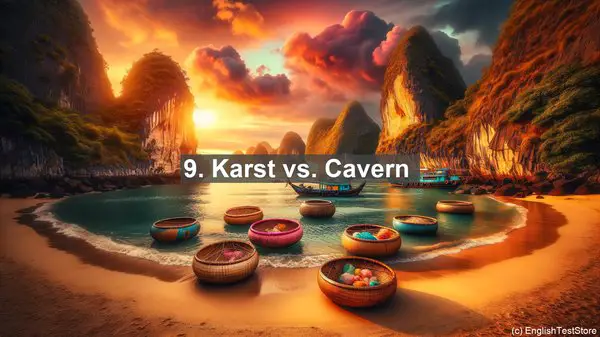Introduction: The Importance of Accurate Terminology
When it comes to studying geology, accurate terminology is crucial. It ensures clear communication and prevents misunderstandings. However, there are several words in geology that are often confused. Today, we’ll explore the top 10 of these words and clarify their meanings. Let’s dive in!
1. Weathering vs. Erosion
Weathering and erosion are often used interchangeably, but they have distinct meanings. Weathering refers to the breakdown of rocks into smaller pieces, while erosion involves the transportation of these weathered materials. So, weathering is like the initial ‘breaking down,’ and erosion is the ‘movement’ part.
2. Lava vs. Magma
Lava and magma both refer to molten rock, but their usage depends on location. When the molten rock is underground, it’s called magma. However, once it reaches the Earth’s surface, it becomes lava. So, think of magma as ‘underground lava’ and lava as ‘surface magma.’
3. Minerals vs. Rocks
While minerals and rocks are related, they’re not the same. Minerals are the building blocks of rocks. They have a specific chemical composition and crystal structure. On the other hand, rocks are made up of various minerals. So, minerals are like the ‘ingredients,’ and rocks are the ‘final dish.’
4. Fossils vs. Petrification
Fossils and petrification are connected to ancient life, but they’re different processes. Fossils are the preserved remains or traces of organisms. Petrification, on the other hand, is the process where organic material is replaced by minerals, turning it into rock. So, fossils are the ‘preserved evidence,’ and petrification is the ‘rock transformation.’

5. Fault vs. Fold
Faults and folds are related to the deformation of rocks, but they’re distinct features. A fault is a fracture where rocks on either side have moved relative to each other. In contrast, a fold is a bend or curve in rock layers. So, faults are like ‘breaks,’ and folds are ‘bends.’

6. Crust vs. Mantle
The Earth’s interior is divided into several layers, including the crust and mantle. The crust is the outermost layer, while the mantle is beneath it. The crust is relatively thin and made up of lighter rocks, while the mantle is thicker and consists of denser materials. So, the crust is like the ‘thin outer skin,’ and the mantle is the ‘thicker layer beneath.’
7. Intrusive vs. Extrusive
Intrusive and extrusive are terms used to describe the formation of igneous rocks. Intrusive rocks form when molten material cools and solidifies beneath the Earth’s surface. Extrusive rocks, on the other hand, are formed from lava that cools on the surface. So, intrusive rocks are ‘below the surface,’ and extrusive rocks are ‘above the surface.’
8. Delta vs. Alluvial Fan
Deltas and alluvial fans are landforms associated with sediment deposition, but they have different locations. Deltas form where rivers meet large bodies of water, like oceans or lakes. Alluvial fans, on the other hand, are found in arid regions and are created by water spreading out as it leaves a narrow canyon. So, deltas are ‘river-mouth formations,’ and alluvial fans are ‘arid region deposits.’
9. Karst vs. Cavern
Karst and cavern are related to unique landforms created by water, but they’re not the same. Karst refers to a landscape with distinctive features like sinkholes and underground drainage systems. A cavern, on the other hand, is a large underground chamber within a rock. So, karst is the ‘landscape,’ and a cavern is a ‘specific underground chamber.’
10. Moraine vs. Esker
Moraines and eskers are landforms associated with glaciers, but they have different shapes and locations. A moraine is a ridge-like feature formed by glacial debris. An esker, on the other hand, is a long, winding ridge made up of sediment deposited by a meltwater stream within or beneath a glacier. So, moraines are ‘glacial debris ridges,’ and eskers are ‘meltwater-formed ridges.’
